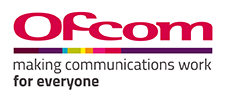A content management system (CMS) will make it easier for you to create, publish, edit, and manage website content using a graphical user interface. Based on your requirements, you have option to choose from an array of open source content management systems – WordPress, Drupal, Joomla, Magento, and Blogger – according to your precise needs. The usage statistics posted on various website depict WordPress currently has a larger market share than other content management systems. But you must not pick a CMS only based on its popularity or market share.
Like other smart entrepreneurs, you can always consider using Drupal as a modular, customizable, and flexible CMS for your website. CMS is an open source CMS. Hence, you can use it for your website without paying any licensing fees. Also, you can install and use Drupal seamlessly without being a skilled web application developer. Like other content management systems, Drupal also provides a variety of themes, plug-ins and modules. You even have option to extend or customize Drupal according to your precise needs simply by installing the required extension plug-ins.
6 Reasons Why You Must Use Drupal as the CMS for Your Website
1) Easy to Install and Use
Unlike other content management systems, Drupal has a simple and lean installation process. You can download and use Drupal without handling complex configurations. The CMS further enables you to create custom websites using a feature called distributions. Distributions provide the specific features and functions required by the website. You have option to choose from over 1150 distributions according to your precise needs. Also, you can download and install the required distributions directly, and use it to create use-specific websites rapidly.
2) Over 2400 Themes
Like other content management systems, Drupal allows you to change the website's look and feel using themes. You even have option to choose from over 2400 default and contributed Drupal themes according to your specific requirements. At the same time, Drupal allows to create sub-themes of an existing theme. The sub-theme inherits all design resources of the parent theme, while allowing you to add additional resources. You can organize the sub-themes in a number of ways, and set site-specific changes to a particular sub-theme.
3) Over 38000 Modules
Drupal is designed as a modular CMS. You can easily extend the core functionality of Drupal using specific contributed modules. You even have option to choose from over 38000 modules according to precise needs of your website. For instance, you can use a module called Better Login to change the style of login and registration forms. Likewise, the Custom Search Module enables you to change the default label and text in the search box and facilitate advanced search. Hence, you can style and customize the website simply using the right Drupal modules.
4) Mobile First Approach
Most users nowadays access websites on their smartphones, tablets, or phablets. Drupal 8 makes it easier for you to create responsive and mobile-friendly website by adopting mobile first approach. It makes the website look good on both computers and mobile devices by providing built-in responsive theme. Also, it comes with admin theme and admin toolbar which are optimized for mobile devices. At the same time, Drupal boosts mobile-friendliness of websites by making HTML5 the standard web markup language.
5) Built-in Multilingual and Translation Features
Drupal 8 accelerates multilingual website development by provide specific modules. You can use specific contributed modules to choose, configure, and apply multiple languages. These modules allow you to choose from various languages, assign language to each website component, configure browser language detection mode, and set admin interface language for each user. At the same time, you can use specific modules to facilitate website content translation. Drupal 8 enables you to accelerate website content translation using a robust tool like Entity Translation. However, you still have option to create a website without enabling the multilingual or translation functionality.
6) Enterprise Grade Security
Drupal scores over other content management systems in the category of security. Unlike other CMS, Drupal does not implement website security through plug-ins. It requires you to enhance the security of the website through proper configuration. Hence, you can easily keep your website secure by focusing on the security configuration. At the same time, you can identify the emerging vulnerabilities simply by visiting the Drupal website. The vulnerabilities posted by other developers on the website will help you to protect the website from emerging security threats.
Like other open source technologies, Drupal is also supported by a large and active community of Drupal programmers . Also, it has been evolving consistently to simplify and speed up website content management. For instance, Drupal 7 enabled users to set up and use the CMS without being proficient in various web technologies. Likewise, Drupal 8 comes accelerates website content management by providing a text editor, responsive images, new translation modules, and new tools.
Source by Arun Kumar Biswal






